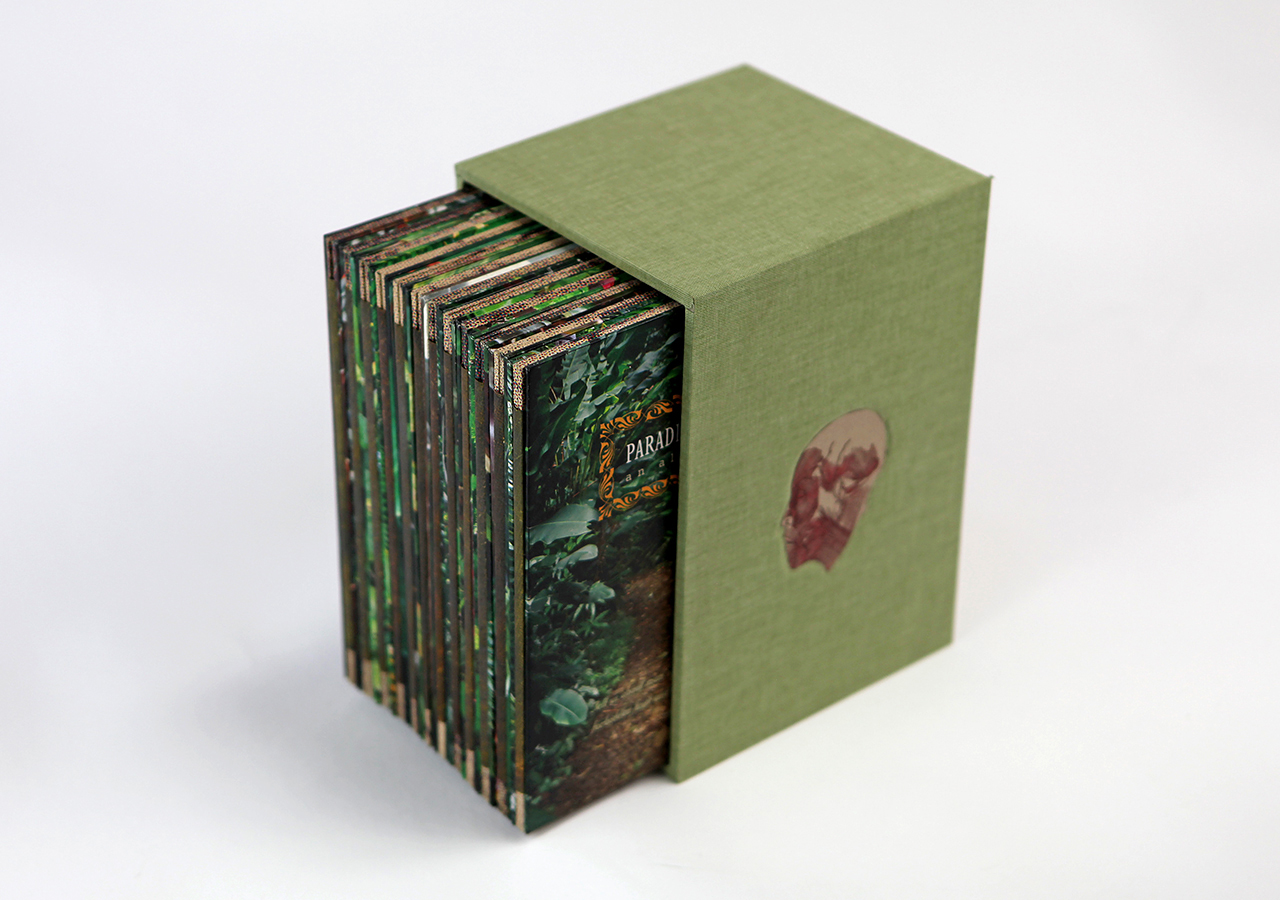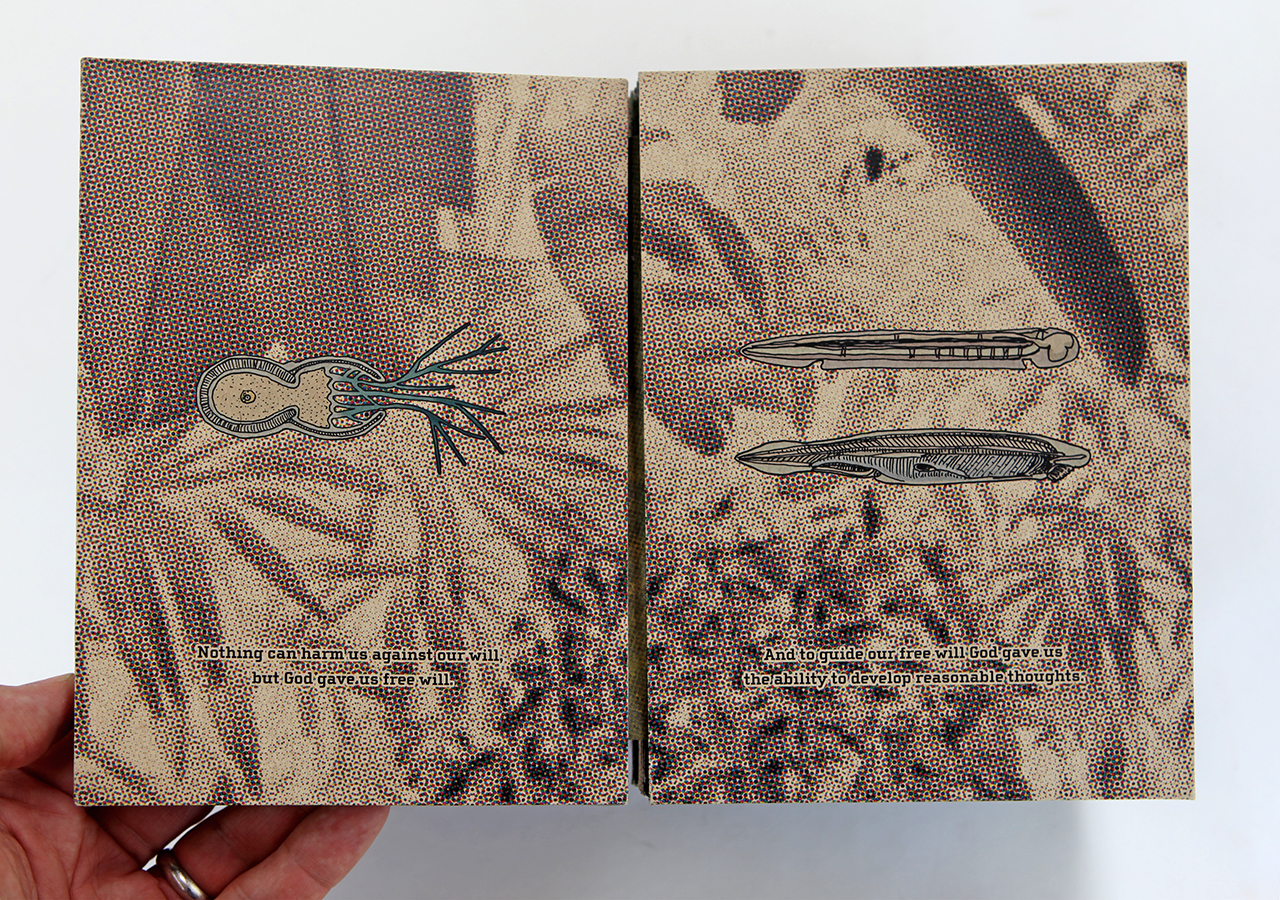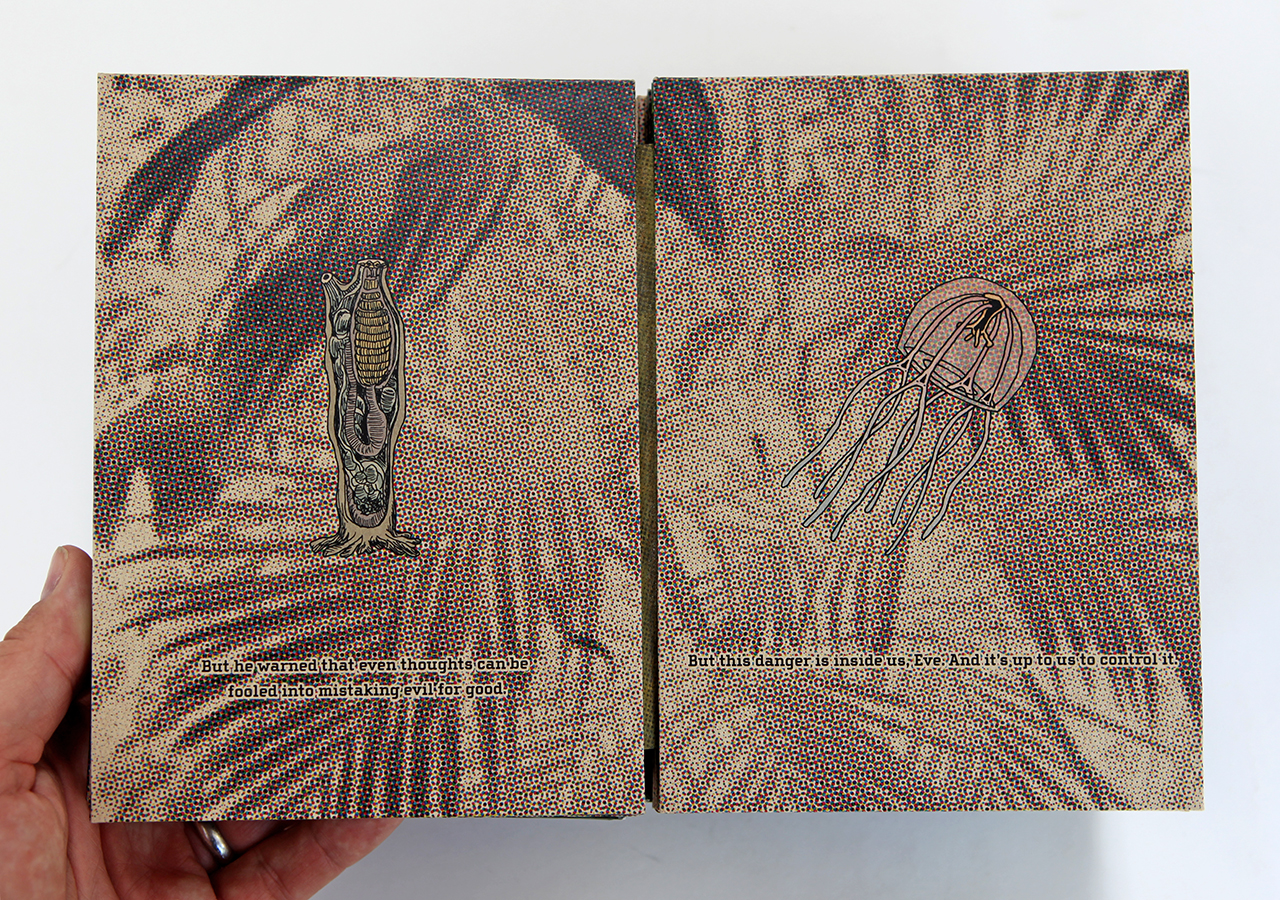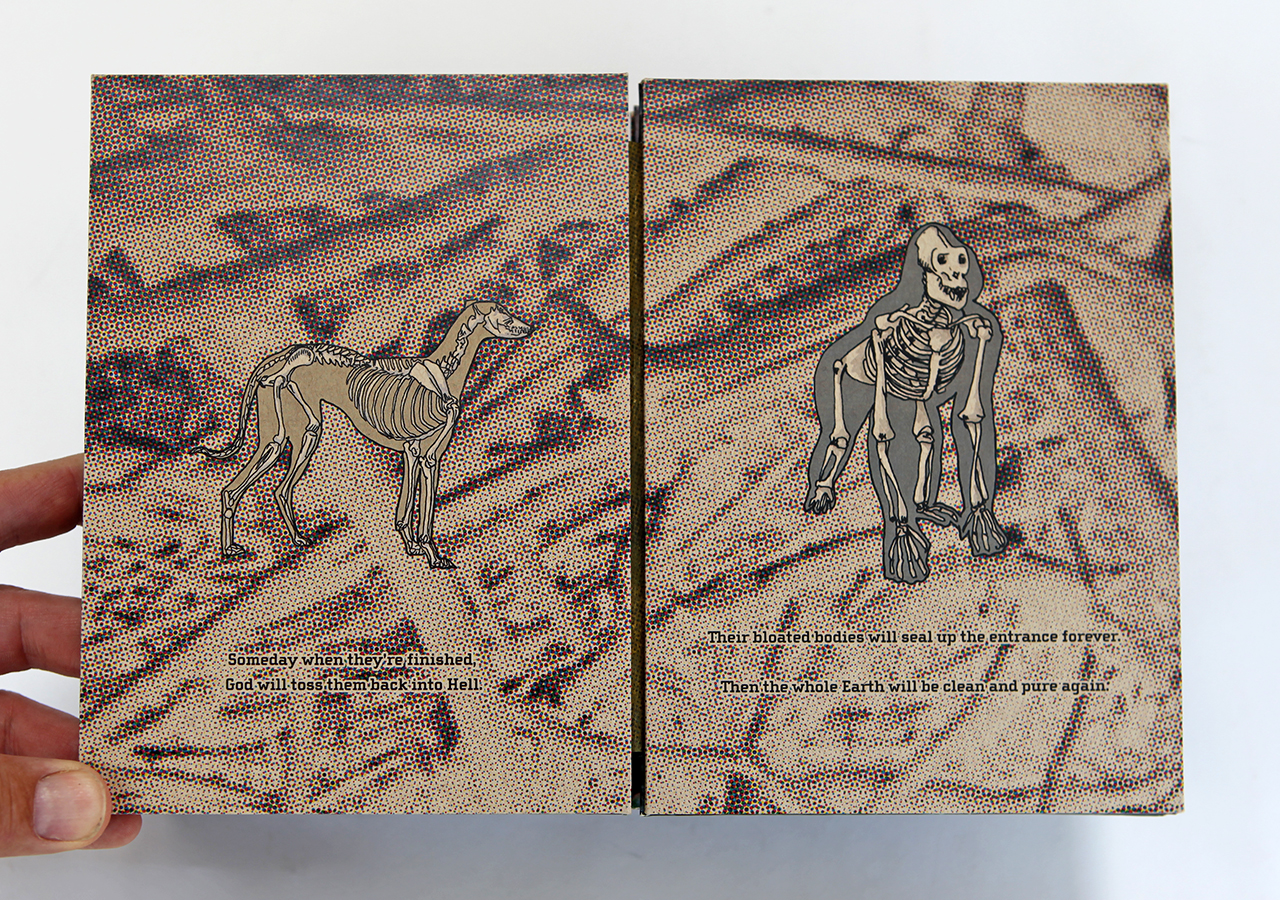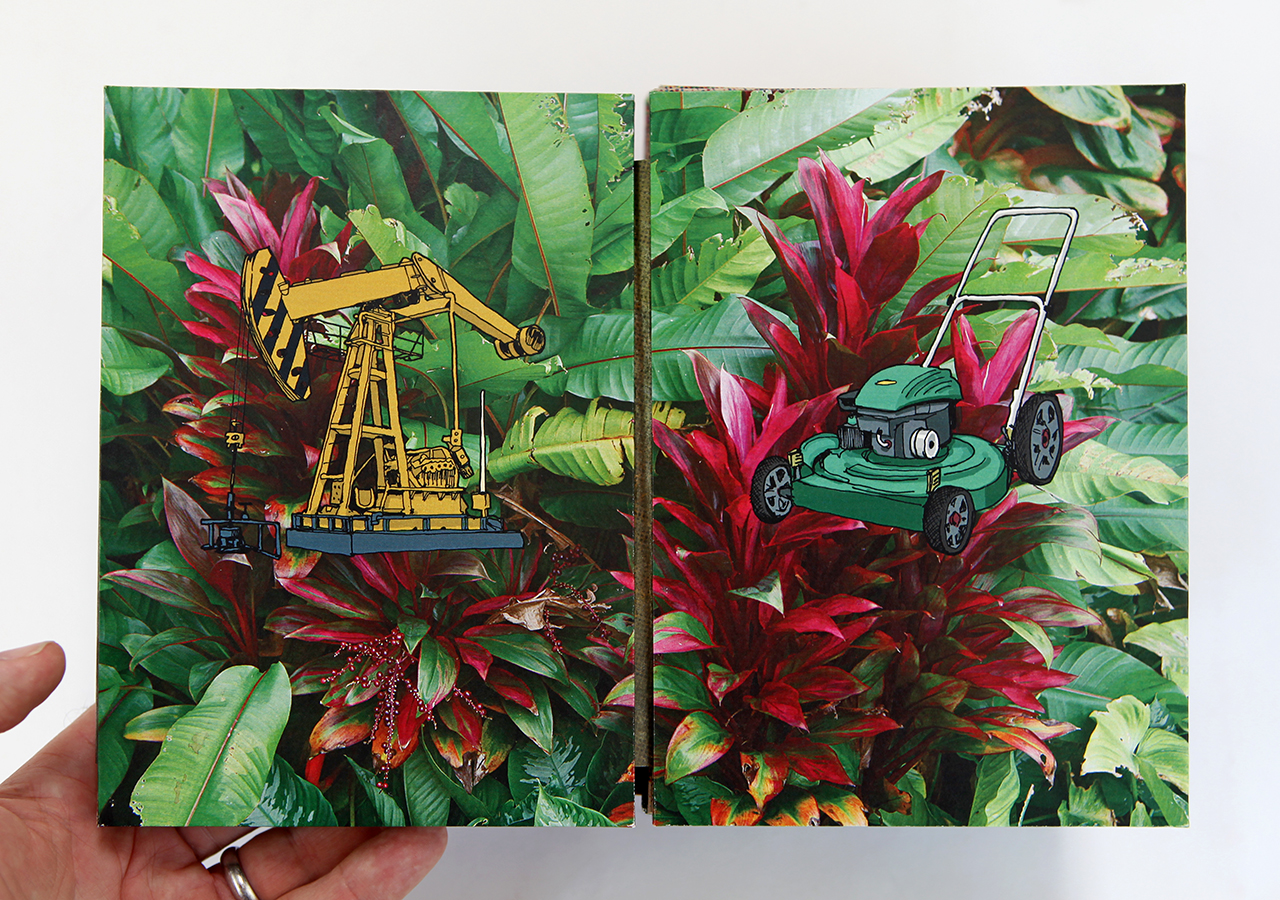PARADISE LOST: AN ALLEGORY Philip Zimmermann (2013)
The title and subject of this book are inspired by John Milton’s epic poem Paradise Lost. It is the story of Adam and Eve in the Garden of Eden. Paradise Lost is interesting to me because it makes real human characters (with strong personalities) of Adam and Eve as well as God and Satan. All are very human, with strengths and foibles. As an atheist, the story as a whole seems laughable to me. But it also seems to serve as a strong metaphor for the human condition and the weaknesses and greed that we all as humans share. Although to some it might seem a peculiar stretch, it is not hard to my mind to make the connections that explain our blindness to the causes changing our climate. This list of factors include greed, complacency, jealousy: the list goes on and on.
The editors of the Norton Anthology of English Literature write, “Milton’s Paradise Lost is ultimately about the human condition, the Fall that caused ‘all our woe,’ and the promise and means of restoration. It is also about knowing and choosing, about free will.” The original is in a form of antiquated English, which I changed to a more contemporary English, using both the original and various “plain English” translations as well as my own rewriting of a number of lines. If you are interested in the text of the book, please write me and I can send it to you, though I think it is legible in the still images to the right.
This book was created under the guidelines for a show proposed by Barb Tetenbaum and Julie Chen using an aleatoric system of Barb Tetenbaum’s devising. They (Chen and Tetenbaum) asked a number of artists to each create a book for a show in February 2013 at the Seager-Gray Gallery in Mill Valley CA called Ideation by Chance. The premise for the show proposed that each artist would have a series of cards drawn for them from a deck that Tetenbaum had devised. The cards showed categories of content and structure in bookart, and each artist had to create their book for the show using the results of the cards drawn for them. I use the fall from grace (caused by a failure of free will) as an allegory for the environmental rape and destruction of Earth. In my book there are three sections, much reduced from Milton’s twelve. In the first section, Adam’s voice is heard in dialog with Eve in the garden. In the second section the Snake convinces Adam and Eve to use their free will and partake of the forbidden fruit. The quest for ‘knowledge’ mentioned in that section can be taken a number of ways. In the final and third section God speaks: there are consequences for the human fall from grace and resulting destruction of the Garden. At the end there is a final cautionary coda which predicts an unhappy ending for mankind but restoration for Eden. While in Hawaii during December 2012, I could not help but notice some of the unhappy results that ever-increasing human populations were making on the ecosystems of Oahu. While there, hurricane Sandy struck the northeastern seaboard creating the largest amount of property damage ever made by a storm on the North American continent. Both of these events were in my thoughts while working on ideas for the book. I wanted to have the book feel a little like a brightly colored fruit, tempting and chromatically lucious on the outside, with a beige meaty inside, with slightly ‘off ’ colors. The drawings inset into the foliage are, on the one side, a sequence signifying evolution and refuting the Adam and Eve narrative, and on the other lush tropical side, a compendium of destructive devices to the environment. The book's closed dimensions are 7.75" x 5.5" x 5" with the slipcase on. It is much longer if stretched out as an accordion structure. Published in an edition of eleven, $850 plus postage. [THE EDITION IS SOLD OUT.]





